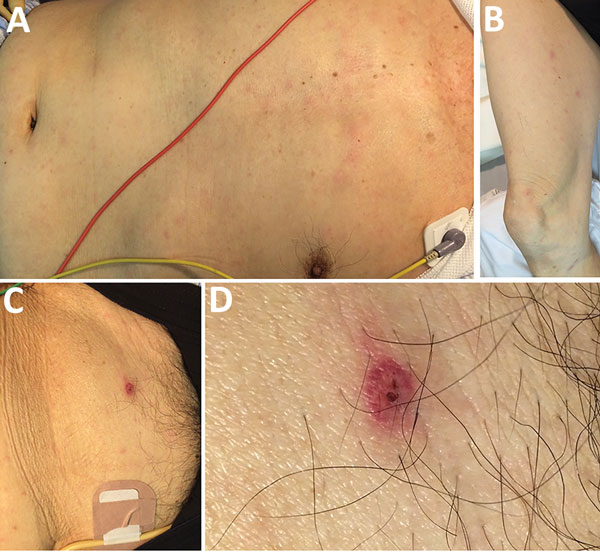Volume 25, Number 6—June 2019
Research Letter
Rickettsia japonica Infection after Land Leech Bite, Japan
Figure

Figure. Patient with Rickettsia japonica infection after being bitten by a land leech, Japan. A, B) Erythematous macular rash on the patient’s torso (A) and extremities (B); C, D) eschar on the lower abdomen showing an atypical appearance with a relatively well-demarcated boundary of erythema with a tiny scab.
Page created: May 20, 2019
Page updated: May 20, 2019
Page reviewed: May 20, 2019
The conclusions, findings, and opinions expressed by authors contributing to this journal do not necessarily reflect the official position of the U.S. Department of Health and Human Services, the Public Health Service, the Centers for Disease Control and Prevention, or the authors' affiliated institutions. Use of trade names is for identification only and does not imply endorsement by any of the groups named above.